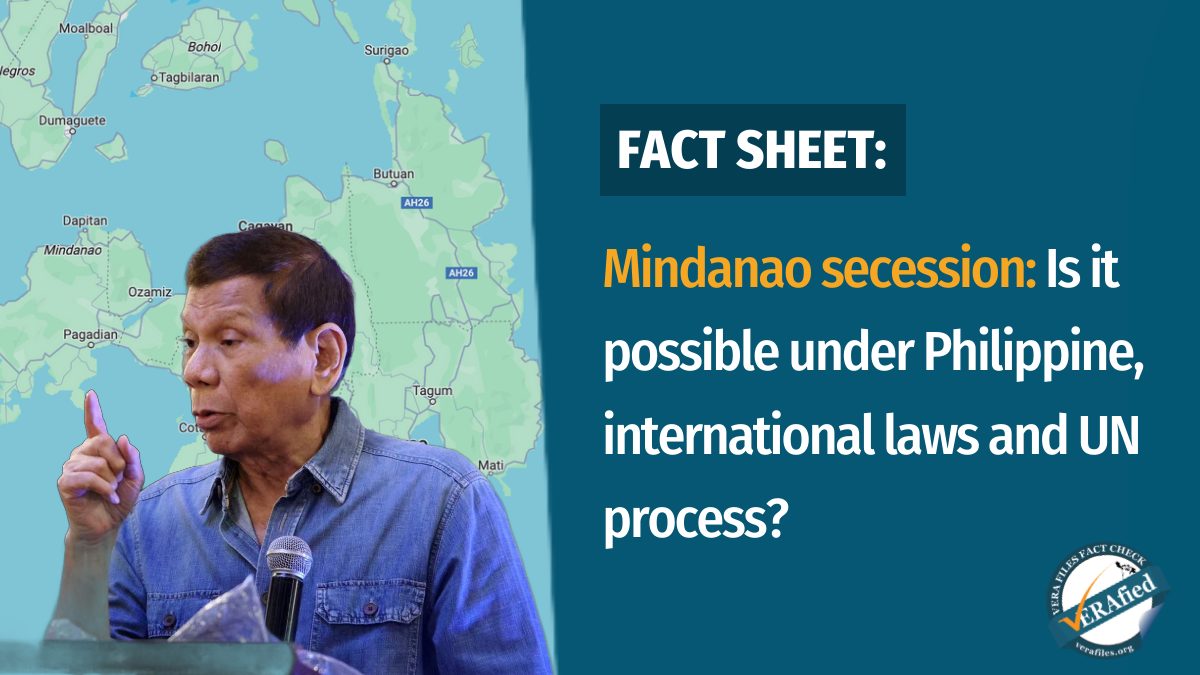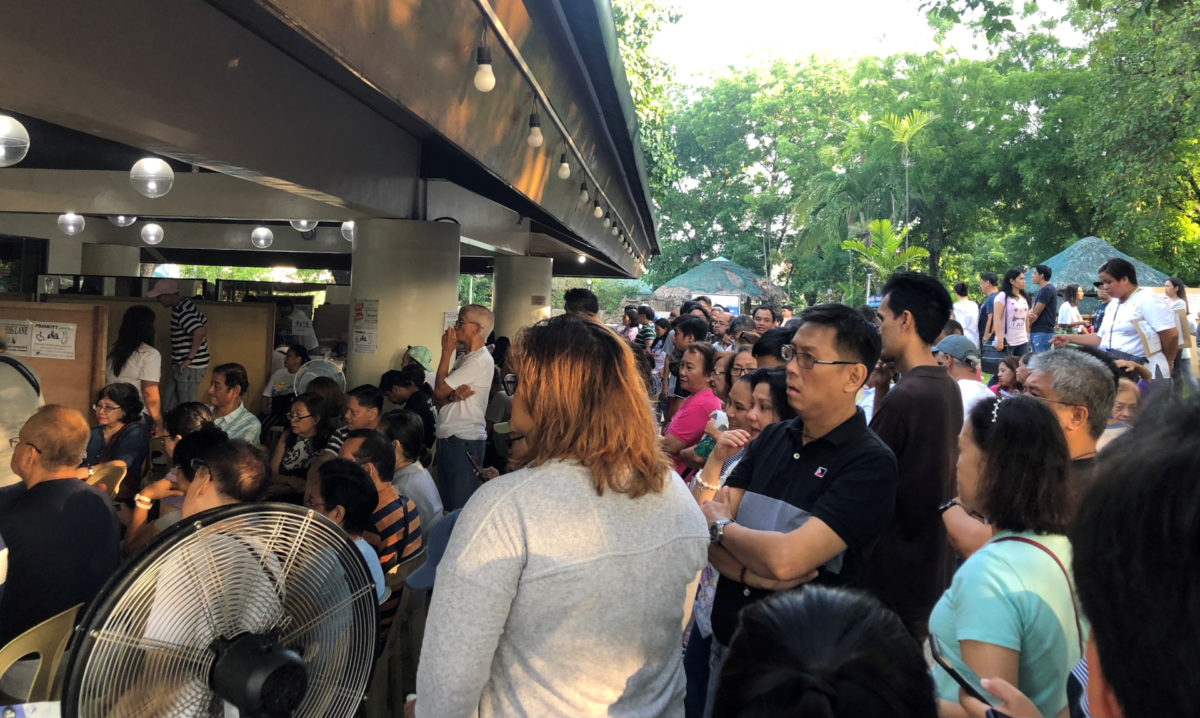This story was updated to correct the provinces under BARMM. An earlier version of the article stated that Lanao del Norte was part of BARMM. Lanao del Norte rejected to be part of BARMM in the 2019 plebiscite. We apologize for this error. The update also reflects the Sept. 9 decision of the Supreme Court that excludes the province of Sulu from the BARMM.
(Updated) For the first time, the Bangsamoro Autonomous Region of Muslim Mindanao (BARMM) will have an election to fill 80 seats in the Bangsamoro parliament in May 2025, simultaneously with the midterm national elections.
“This [the BARMM elections] will be a culmination of the peace process between the GRP [Government of the Republic of the Philippines] and the MILF [Moro Islamic Liberation Front],” said Dr. Zainal Kulidtod, a political science professor at the Mindanao State University in Marawi City.
The success of the elections, he said, means “we can safely say that the people politically accepted the new structure of government.”
1. What is BARMM?
BARMM comprises the provinces of Tawi-Tawi, Lanao del Sur, Maguindanao and Basilan, plus some parts of Cotabato. The Bangsamoro are descendants of people living in Muslim Mindanao even before colonizers reached the archipelago in the 16th century.
The Bangsamoro Organic Law (BOL) or Republic Act No. 11054 declared the establishment of a political entity, now known as the Bangsamoro government, and recognized its right to self-governance towards the development of the Bangsamoro people and other indigenous groups in the region.
After over 50 years of conflict between the national government and revolutionary groups, BARMM might see a significant move toward peace with its first elections.
Also written in the BOL is Bangsamoro’s parliamentary form of government in which 80 seats are granted legislative and executive powers in the region—the authority to write, pass and execute laws within their territory. The parliament reflects the “asymmetrical relationship” between BARMM and the national government, recognizing their aspirations for self-determination.
Kulidtod explained that with the unitary and presidential characteristics of the national political system, people vote for both the head of state or the president and the legislators.
Under the BARMM’s parliamentary system, voters in the region will elect members of the parliament who will serve both executive and legislative functions.
If successful, the BARMM elections can provide new perspectives on the country’s form of government. “It’s one of its kind,” Kulidtod said, “[the] unitary system of government na ang kaniyang (will be its) national structure—government institutions—[in a] presidential [system] ay posible pala na magkaroon ng (it is possible to have a) local parliamentary setup.”
2. What will happen in the first BARMM parliamentary elections?
In next year’s elections, voters in the BARMM will elect 80 members of its parliament: with 40 representing political parties, 32 for the districts and 8 for the sectors. Last July, the Commission on Elections (Comelec) announced the 16 regional parties that petitioned for registration and accreditation for the upcoming balloting.
The aftermath of the elections will be a test on whether or not the political parties were formed with genuine regard for good governance and policy-making or with motivations to advance personal interests, said Kulidtod. He added that the elections “will show the party system alignment in the region.”
“Apparently, ang BARMM ngayon ay (at present is a) multi-party society pero titingnan natin (but we will see) … kasi posible po na (because it is possible to have a) multi-party society pero ang (but the) party system, isa lang (is only one).”
Meanwhile, the Bangsamoro Autonomy Act No. 58 listed the 32 parliamentary districts in BARMM, with three districts in Basilan, eight in Lanao del Sur, four in Maguindanao del Norte, four in Maguindanao del Sur, seven in Sulu, three in Tawi-Tawi, two in Cotabato City, and a lone district composed of the special geographic areas.
The sectoral seats will be filled by representatives of women, youth, settler communities, Non-Moro Indigenous People (NMIP), traditional leaders and ulama, who are “Muslim religious scholars and chief religious authorities.” The traditional leaders and ulama sectors, with one seat each, and NMIP, with two seats, will be elected through assemblies and conventions of their respective sectors in the first and succeeding elections.
The women and youth sectors, with one seat each, and the settlers, with two seats, will be elected through assemblies in 2025 for its transitory period. However, in the succeeding elections, these seats will be filled through plurality voting and will be part of the automated process.
3. What does it mean for BARMM to have peaceful parliamentary elections?
Kulidtod suggests that the conflict in Mindanao runs deeper than most people think and that the establishment of BARMM and its first elections may not completely extinguish this problem. Regardless, he said, “Makatulong po ito sa kaniya para po at least maibsan man lang itong problema ng peace and order dito sa BARMM (It can help to at least ease the peace and order problem here in the BARMM).”
Separatist ideals began to find its footing in Muslim Mindanao after the Jabidah Massacre in 1968 when over 20 young Moro military trainees were killed by government forces after allegedly discovering the plan to send them to infiltrate and reclaim the disputed territory, Sabah.
In 1969, the Moro National Liberation Front (MNLF) was established after widespread support for “an Independent Moro state,” according to The Asia Foundation’s study on “The Contested Corners of Asia.” This saw the dawn of a conflict-ridden Mindanao as the armed struggle between the MNLF and government forces intensified and spread throughout the region. In 1984, a faction from the MNLF established the MILF. It differentiated itself from the latter with its goals of also “forming an Islamic state,” clearly adding a religious layer to their aims of separation.
There were significant developments to end the armed conflict in Mindanao throughout the decades. The 1976 Tripoli Agreement marked the shift of the goals of the MNLF from separation to demands for an autonomous region and the 1996 Final Peace Agreement integrated the MNLF into the government.
However, with the MILF continuing the armed movement and the dissatisfaction towards MNLF’s founder Nur Misuari’s leadership in the Autonomous Region of Muslim Mindanao (ARMM), peace remained elusive.
The changing administrations also constantly shifted the tides in the peace talks process. Finally, in 2012, the Framework on the Bangsamoro declared the establishment and transition to a Bangsamoro with more autonomous administrative powers than the ARMM.
4. Why does the BARMM matter to the rest of the country?
Several provisions in the BOL emphasized the need for combined efforts of the Bangsamoro and national governments toward the rehabilitation and development of areas previously plagued by armed conflict. Some P5 billion is allocated annually to the BARMM’s special development fund for 10 years, totaling P50 billion.
Last May, Budget Secretary Amenah Pangandaman hailed BARMM as “a land of promises fulfilled,” with P3.3 billion worth of investments the region generated in the last quarter of 2023. Pangandaman said, “We are also on the path to making the Philippines—through BARMM—an investment destination.”
More economic opportunities are promised for a more peaceful BARMM. In 2023, Sukarno Abas, executive director of the Bangsamoro Economic Zone Authority, announced plans for developing new economic zones where “halal hubs” would emerge.
Kulidtod said the BARMM election holds immense value to the ordinary non-Mindanaoan Filipino as it exemplifies the importance of accepting ethnocultural diversity. The Philippines is home to different cultures, languages, religions and ways of life—a reality that is commonly undermined in the pursuit of unity among all Filipinos regardless of background.
A peaceful BARMM election will show that “we can be better united as one if we can recognize, respect and even celebrate our diversity or differences,” said Kulidtod.
Once the BARMM election becomes successful, Kulidtod said, it will be “a testament that the Philippine government or the Philippine political culture is maturing,” adding, “kasi pwede natin palang bibigyan ng pagkakataon ang ibang tao o ibang minority sa Pilipinas na […] ang kanilang kultura, ang mamumuno sa kanilang sarili (because it will show that we can give an opportunity to other people or other minority in the Philippines… their culture, to govern by themselves).”







